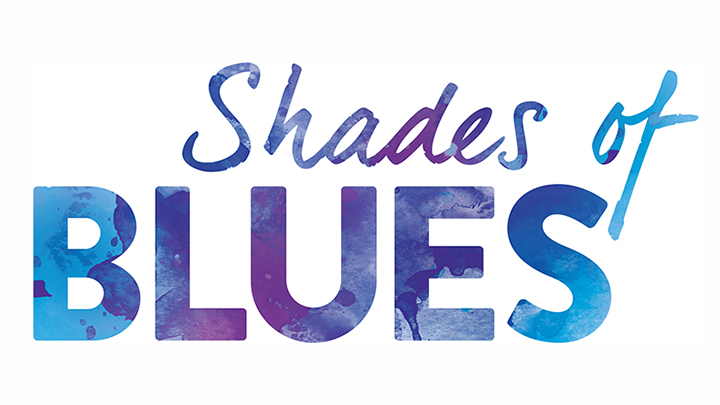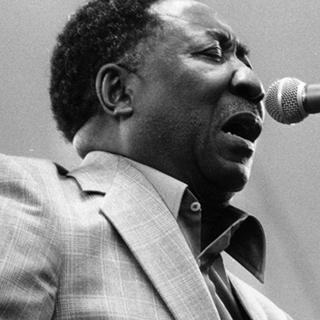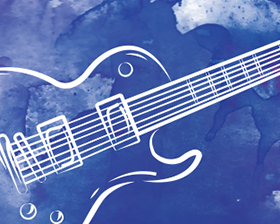The blues was born behind a mule.
By Marcia Friedman
If you enjoy just about any type of popular music (rock, R&B, hip-hop), then you can thank the blues. Many people believe this musical genre is one of the most important forms of American music developed in the 20th century. Created by African Americans in the deep South, it expressed hardship and heartbreak, despair and hope, and passion and politics as only music could—and it coalesced into characteristic patterns, styles, and rhythms that would lay the foundation for new genres like rock ’n’ roll. Here’s a quick overview of how the blues came to be an iconic and influential part of America’s musical landscape.
The Time, Places, and People that Gave Rise to the Blues
The blues developed in African American communities in the South. But its roots reach across the ocean to the west coast of Africa, where people were enslaved and brought to the United States from the 1600s to early 1800s. The slaves—more than four million by the end of the Civil War—brought with them various African musical traditions such as call-and-response singing, polyrhythms (using multiple rhythms at once), and notes that sounded different from European-based folk and classical music.
As slaves toiled on southern cotton, tobacco, and sugarcane farms, music offered comfort and distraction as well as a form of expression. Work songs, often featuring call-and-response, helped slaves pass the time and even communicate. Mournful, improvised solo singing known as field hollers often expressed a range of thoughts and were sometimes accompanied by moaning sounds. Slaves also combined their musical styles with religious lyrics, and these songs became known as spirituals.
In the years after slavery ended in 1865, these elements heavily influenced the music African Americans were creating and performing everywhere from impromptu sessions on porches or picnic grounds to professional stages in traveling shows or in bars known as “juke joints.” They used whatever instruments they could get their hands on, most often acoustic guitar, harmonica, and percussion and occasionally horns and string instruments like the banjo.
Blues Central: The Mississippi Delta
Although what would become known as the blues was taking shape all across the deep South, most people agree the epicenter was the Mississippi Delta, the rural region between the Mississippi and Yazoo Rivers. African Americans moved to this area in great numbers starting in the late 1800s, lured by opportunities to buy or work on fertile farmland—and many were musicians. Most of these new farmers ended up working as sharecroppers, paying rent for the land by sharing a portion of harvests with the landowner, and this arrangement kept them in a cycle of debt and poverty. They faced social oppression and their livelihoods could easily be wiped out by floods or insects such as the crop-destroying boll weevil.
This evolving form of music could express their cultural experiences in a profound way, and the Delta gave rise to more influential early blues performers than any other region. Early bluesmen include Charley Patton, Son House, and Robert Johnson. They often performed solo with just a guitar or harmonica and an emotion-filled voice. Their style—often described as raw and rugged, with percussive or slide guitar playing and soulful singing—would later become known as Delta blues and is sometimes more generally called country blues (along with similar styles from Texas and the Piedmont region). Their blues, passed down orally from one musician to another, was popular among local audiences but largely hidden from national view for many years.
Listen to Charley Patton’s “High Water Everywhere,” recorded in 1929, an example of the percussive guitar playing Patton was known for and also a topical song about Delta life.
The Blues Breaks Out
Despite the obscurity of the early Delta blues, the sound that would become known as the blues was on its way to being discovered as early as 1902. That’s when popular touring jazz singer Gertrude “Ma” Rainey, who became known as the mother of the blues, recalled hearing this strange-sounding music being sung by a young woman in Missouri. Rainey incorporated this music into her performance to the delight of her audiences. After being repeatedly asked the name of this style, she one day declared “It’s the blues.”
Listen to Ma Rainey’s “Bo-Weavil Blues,” recorded in 1923. Even though the recording quality is poor, notice her strong expressive voice—and a subject referencing one of the natural hardships of Delta life.
The self-described “father of the blues,” W.C. Handy, discovered this new sound in a separate but similarly accidental way. He told what’s become a legendary story of falling asleep in a train station in Tutwiler, Mississippi, in 1903 and awaking to a young man playing a guitar by pressing a knife against the strings (a style now known as slide guitar) and singing in a repeating pattern. He called it the “weirdest” music he had ever heard, but it went on to inspire his own music. In 1912, he published “Memphis Blues”—the first song with “blues” in the title. Compared with Delta blues, this style features more instruments and a more polished sound, though it shares similar elements such as a 12-bar chord pattern. Handy went on to compose many other hit blues songs and champion this new type of music to a wider audience.
As the public appetite for this new genre grew, professional singers backed by small bands began performing the blues, a sound sometimes called classic blues. Mamie Smith’s 1920 “Crazy Blues,” the first blues song recorded by a black female vocalist, became a hit. Shown that such recordings could make money, record companies rushed to capture more of that sound. Female artists such as Mamie Smith, Bessie Smith, Ida Cox, Memphis Minnie, and other singers ruled this initial boom of blues recording.
Discovering Blues Traditions
Only later did the Delta blues became more widely known outside the South. That breakthrough happened after folklorist John Lomax and his son Alan began visiting the region in 1933 to document folk songs for the Library of Congress. The Lomax team visited towns and even prisons to try to discover, record, and share an older style of the blues.
Looking through a Folklorist’s Eyes
Listen to folklorist Alan Lomax talking about blues performer Huddie Ledbetter, popularly known as Leadbelly, whom Lomax first met in the Angola penitentiary in Baton Rouge, Louisiana, in 1933. Note that the Lomaxes sought out prisoners (and also visited the notorious Parchman Farm penitentiary in the Mississippi Delta) because without access to radio or records, these imprisoned men would not know how the blues had been changing. They would only remember the style they heard or played themselves before they went to jail—thereby offering a unique window to a musical past that had never before been written down or recorded.
By the time the Lomaxes began their research to document where the blues had been, the genre was already moving on its remarkable journey across the country. Not only was it being played on record players and radio stations, it was also carried in the hearts and souls of African Americans moving away from the South in search of a better life. This historic mass movement of people and their culture is known as the Great Migration, and it forms the next chapter in the story of the Blues.


